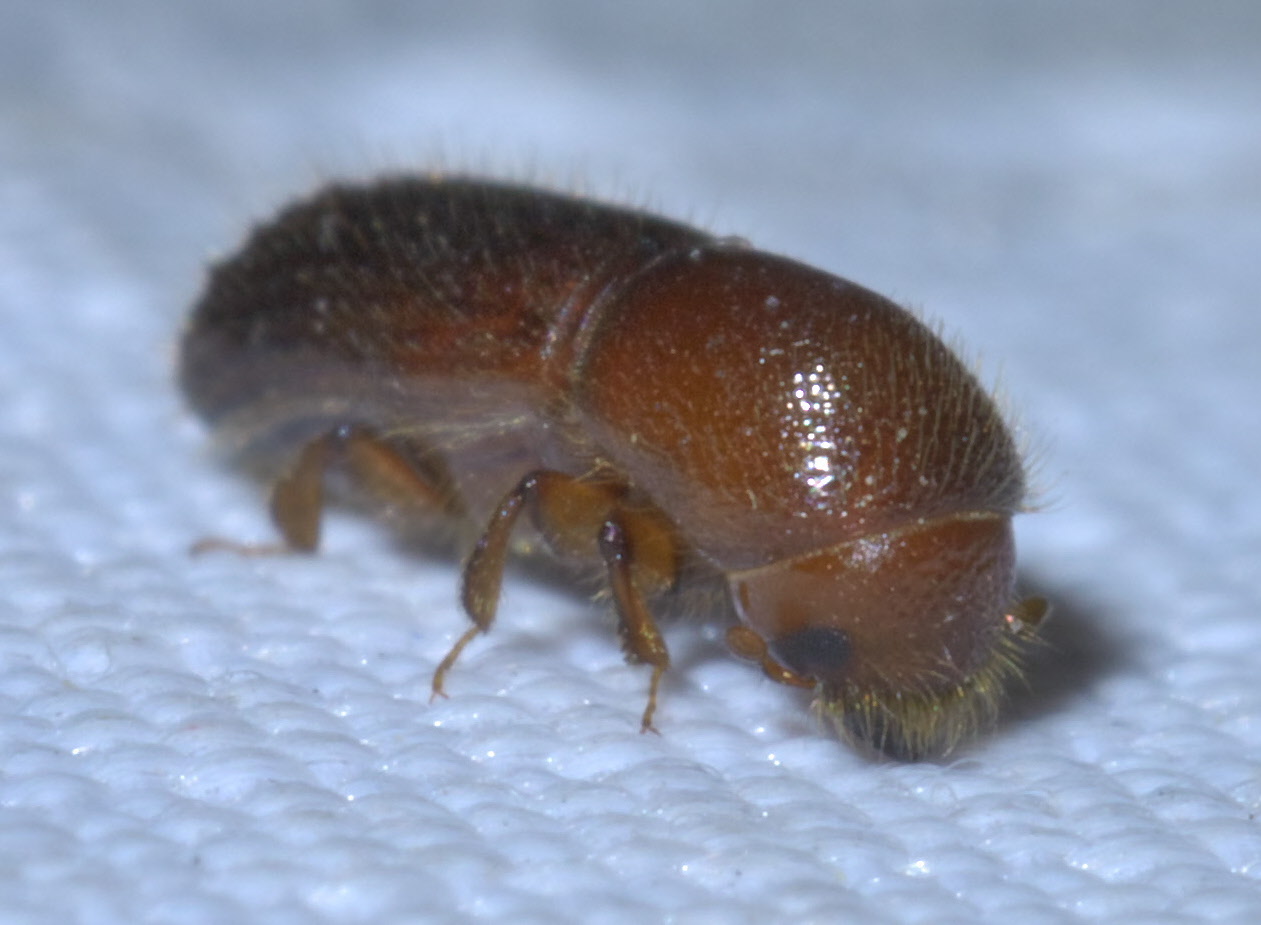|
Xyleborus (beetle)
''Xyleborus'' is by far the largest ambrosia beetle genus in the tribe Xyleborini, with over 500 species.MSU (2004) ''Xyleborus'' nowadays includes a number of formerly independent genera. In addition, the genera '' Coptoborus'', '' Cryptoxyleborus'' and '' Euwallacea'' are often included here, too; this may be correct, as they seem to be closely related. Less often, '' Ambrosiodmus'', ''Premnobius'' and ''Xyleborinus'' are included in ''Xyleborus'', but they seem to be well distinct; ''Premnobius'' might even not belong to the Xyleborini at all. The different species can be best differentiated by the gallery burrows they build and the tree species they infest. A significant member, '' X. dispar'', causes pear blight. Selected species * '' Xyleborus affinis'' Eichhoff, 1868 * ''Xyleborus atratus'' Eichhoff, 1875 * ''Xyleborus californicus'' Wood, 1975 - may belong in ''Cyclorhipidion'' * '' Xyleborus celsus'' Eichhoff, 1868 * '' Xyleborus cryptographus'' (Ratzeburg, 1837) * '' ... [...More Info...] [...Related Items...] OR: [Wikipedia] [Google] [Baidu] |
Xyleborus Affinis
''Xyleborus affinis'', the sugarcane shot-hole borer, is a species of typical ambrosia beetle in the family Family (from la, familia) is a group of people related either by consanguinity (by recognized birth) or affinity (by marriage or other relationship). The purpose of the family is to maintain the well-being of its members and of society. Idea ... Curculionidae. It is found on all forested continents, primarily in areas with humid tropical climates. Subspecies These two subspecies belong to the species ''Xyleborus affinis'': * ''Xyleborus affinis affinis'' * ''Xyleborus affinis mascarensis'' Eichhoff, 1878 References Further reading * * Scolytinae Articles created by Qbugbot Beetles described in 1868 {{Scolytinae-stub ... [...More Info...] [...Related Items...] OR: [Wikipedia] [Google] [Baidu] |
Xyleborus Monographus
''Xyleborus monographus'', the ''Mediterranean oak borer'', is a species of ambrosia beetle in the family Curculionidae. It is native to oaks in the regions around the Mediterranean Sea, but since 2019 has been found in California, where the oak trees it infests may be more vulnerable. Native habitat The Mediterranean oak borer is around long. It is native to the regions surrounding the Mediterranean. In these parts of Europe, the Middle East and North Africa the beetle mostly infests dead and dying oak trees. It is found in at least twelve species of oak. As with other ambrosia beetles, it carries symbiotic ambrosia fungi, which it cultivates for food along the boring tunnels. One of these fungi, ''Raffaelea montetyi'', seems linked to wilt disease in cork trees (''Quercus suber'') in Portugal. When the females fly to another tree they carry the fungal spores in their mycangia. The beetle penetrates through thin or cracked bark in the canopy branches. It first invades and ki ... [...More Info...] [...Related Items...] OR: [Wikipedia] [Google] [Baidu] |
Xyleborus Intrusus
''Xyleborus intrusus'' is a species of typical bark beetle in the family Family (from la, familia) is a group of people related either by consanguinity (by recognized birth) or affinity (by marriage or other relationship). The purpose of the family is to maintain the well-being of its members and of society. Idea ... Curculionidae. It is found in North America. References Further reading * * Scolytinae Articles created by Qbugbot Beetles described in 1898 {{Scolytinae-stub ... [...More Info...] [...Related Items...] OR: [Wikipedia] [Google] [Baidu] |
Xyleborus Horridus
''Xyleborus horridus'' is a species of typical bark beetle in the family Family (from la, familia) is a group of people related either by consanguinity (by recognized birth) or affinity (by marriage or other relationship). The purpose of the family is to maintain the well-being of its members and of society. Idea ... Curculionidae. It is found in North America. References Further reading * * Scolytinae Articles created by Qbugbot Beetles described in 1869 {{Scolytinae-stub ... [...More Info...] [...Related Items...] OR: [Wikipedia] [Google] [Baidu] |
Xyleborus Glabratus
''Xyleborus glabratus'', the redbay ambrosia beetle, is a type of ambrosia beetle invasive in the United States. It has been documented as the primary vector of ''Raffaelea lauricola'', the fungus that causes laurel wilt, a disease that can kill several North American tree species in the family Lauraceae, including redbay, sassafras, and avocado. Distribution ''Xyleborus glabratus'' is native to Asia, including India, Japan, Myanmar, and Taiwan. It was first detected in the United States in 2002, and may have arrived in wood products, packing materials or pallets. ''X. glabratus'' and laurel wilt disease have since spread through much of the Gulf and Atlantic Coastal Plains, ranging from eastern Texas and Arkansas to North Carolina, and in 2019 they were found in Kentucky and Tennessee. Identification Adult The female redbay ambrosia beetle is a small (2.1 to 2.4 mm long), black or amber-brown, cigar-shaped beetle. The dorsal surface is mostly hairless and shiny whe ... [...More Info...] [...Related Items...] OR: [Wikipedia] [Google] [Baidu] |
Xyleborus Ferrugineus
''Xyleborus ferrugineus'' is a species of typical bark beetle in the family Curculionidae. References Further reading * * Scolytinae Articles created by Qbugbot Beetles described in 1801 {{Scolytinae-stub ... [...More Info...] [...Related Items...] OR: [Wikipedia] [Google] [Baidu] |
Xyleborus Celsus
''Xyleborus celsus'' is a species of typical bark beetle in the family Family (from la, familia) is a group of people related either by consanguinity (by recognized birth) or affinity (by marriage or other relationship). The purpose of the family is to maintain the well-being of its members and of society. Idea ... Curculionidae. It is found in North America. References Further reading * * External links * Scolytinae Articles created by Qbugbot Beetles described in 1868 {{Scolytinae-stub ... [...More Info...] [...Related Items...] OR: [Wikipedia] [Google] [Baidu] |

